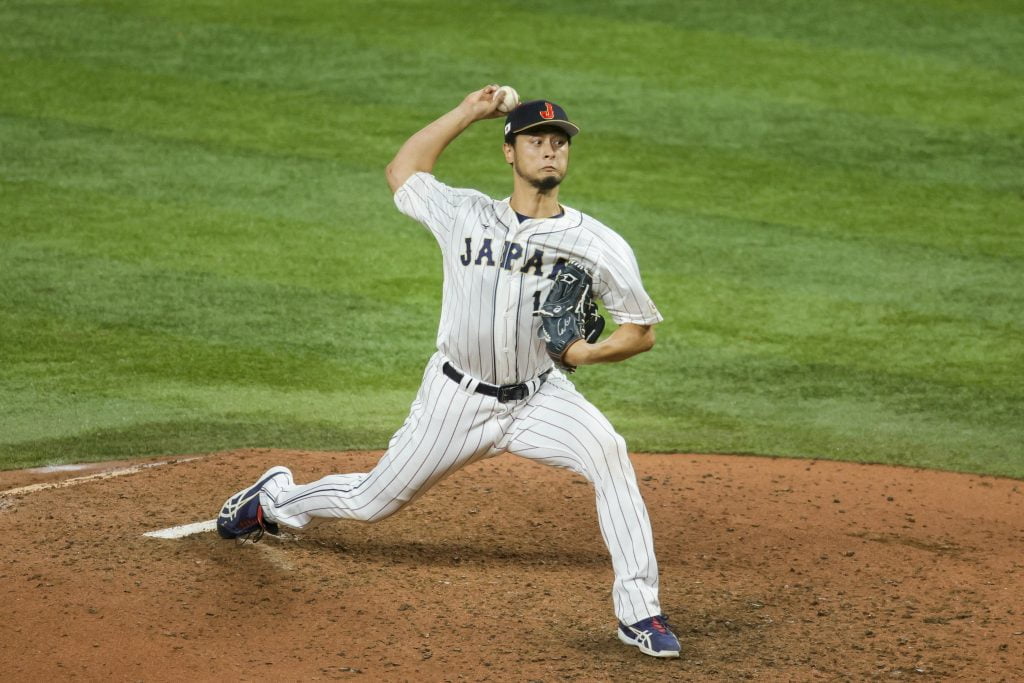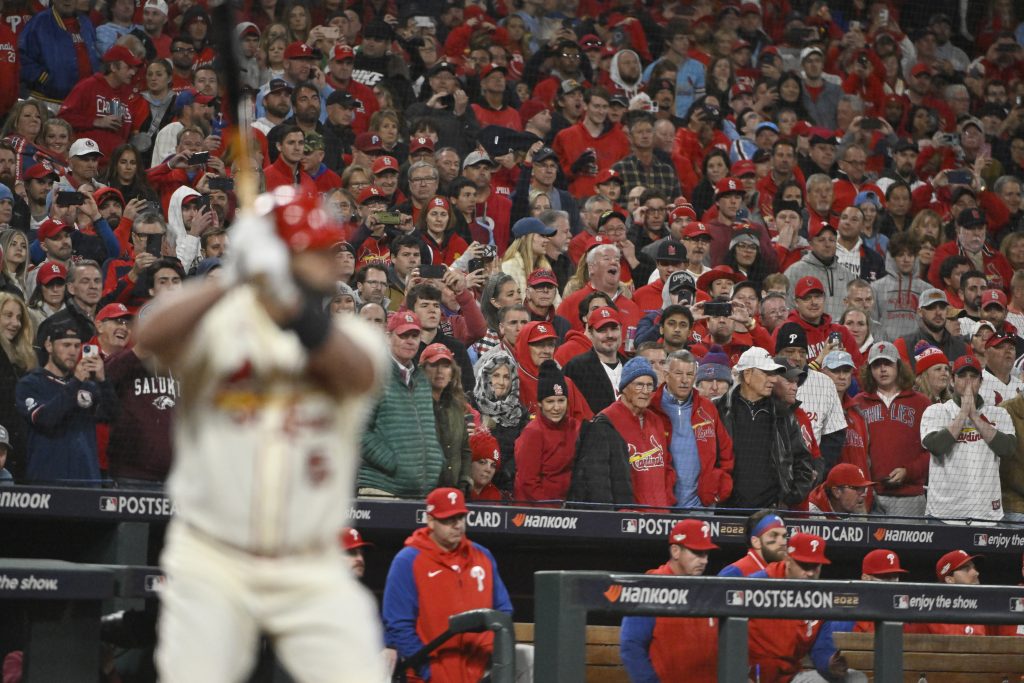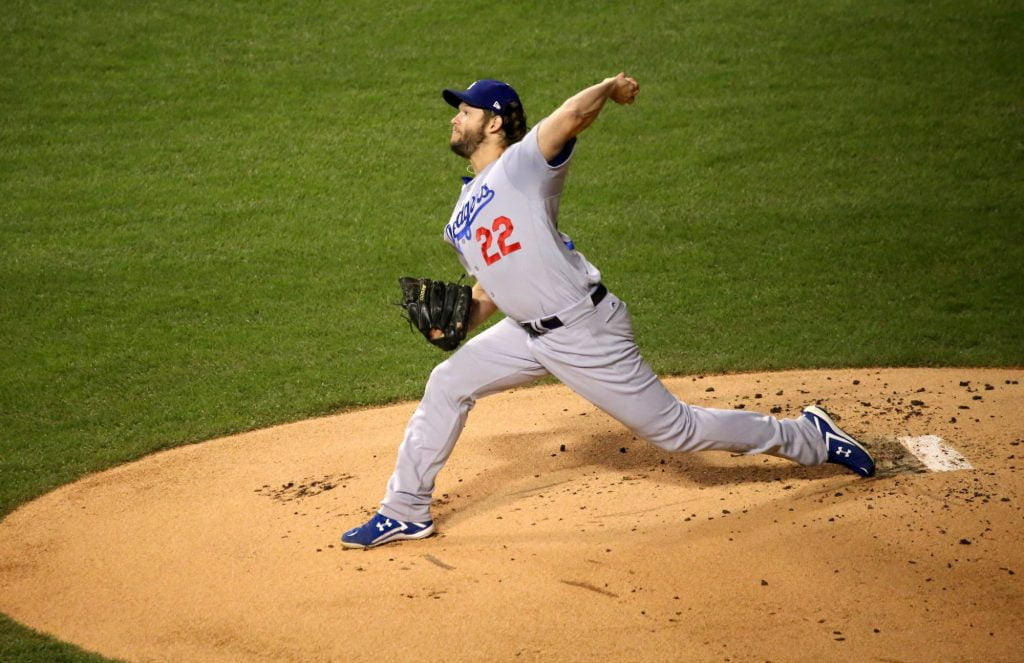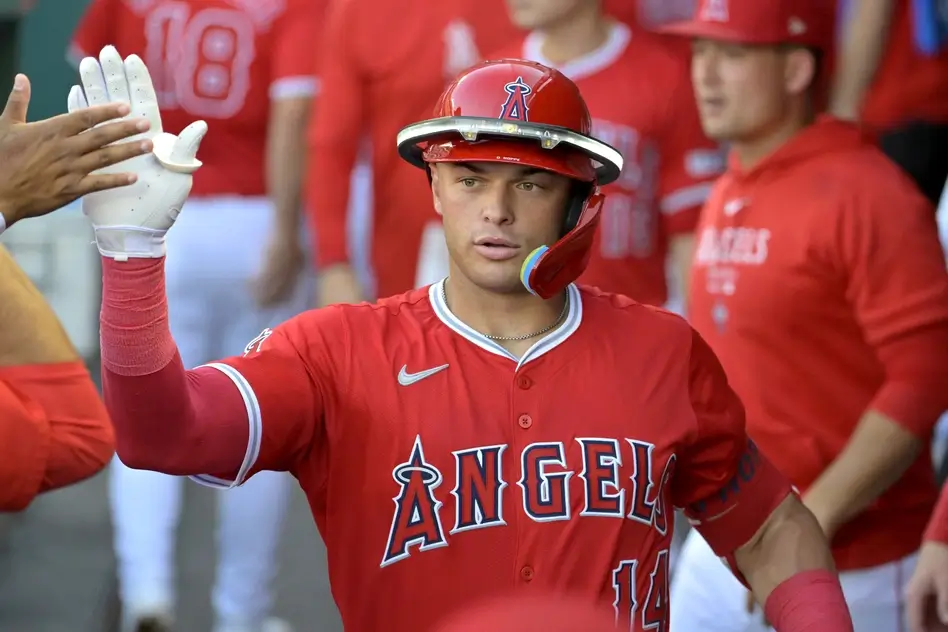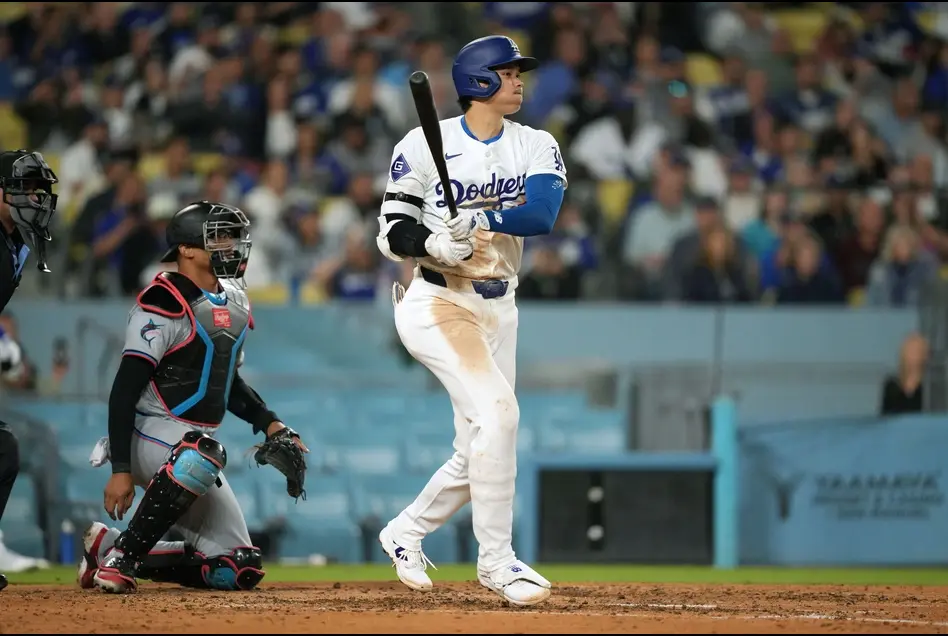Since pitching is more of an art than a science – and often just as confusing as both art and science – most fans need baseball pitch types explained.
Obviously, fastball sounds simple enough, but MLB pitch types extend far beyond chucking the ball as fast as you can. For anyone who needs baseball pitch types explained, we wanted to put together a list of the names of pitches thrown in MLB and some basic information about each pitch.
Baseball pitch types explained: List of different pitches
Most fans can probably name three or four MLB pitch types. But with all of the different grips for pitchers and the various forms of baseball pitches movement that pitchers have created over the years, our baseball pitches list is almost endless.
Keep in mind that some of the greatest pitchers of all time have more or less created their own unique pitches, so there is a lot of ground to cover if you want baseball pitch types explained.
Four-Seam Fastball
When most people think of a fastball, they think of a four-seam fastball. This is when pitchers dig deep and throw the ball as hard as they can.
They grip the ball between the seams, which is the same way field players grip balls in order to throw the ball hard and straight. It’s not about trying to fool hitters with movement. The goal with a four-seam fastball is to throw the ball hard and in the right spot to produce a swing and miss or weak contact.
Two-Seam Fastball
With a two-seam fastball, pitchers typically lose a little velocity but gain a little movement compared to a four-seam fastball.
The grip is a little different with pitchers placing their two fingers on the part of the ball where there are two seams close together. Pitchers use this pitch when they know that they don’t have the velocity to overpower hitters. By throwing a two-seam fastball rather than a four-seam fastball, they get a little movement to deceive the hitter.
Cutter
A cutter is also a part of the fastball family of pitches. It’s not as common as a four-seam fastball or a two-seam fastball but can be effective for pitchers facing hitters from the opposite side.
The goal is to have a little bit of late movement so that the hitter can’t square up the pitch. While a two-seam fastball will move away from the pitcher’s arm slot, the cutter will move inward. Therefore, right-handed pitchers will only use a cutter against left-handed batters while left-handed pitchers will only use it against right-handed batters as a way of pitching inside.
Curveball
A curveball is one of the most common off-speed pitches thrown in baseball. Most pitchers develop a curveball as a way to change speeds against hitters and have a pitch with a considerable amount of movement.
A great curveball will move horizontally while also showing a vertical drop. This will get hitters to either be early with their swing because they weren’t expecting a slower pitch or swing over the top because they didn’t predict the movement of the pitch. The trick for pitchers is to throw a curveball with the same arm speed as a fastball, which is accomplished by mastering a curveball grip.
Slider
Along with the curveball, a slider is a common off-speed pitch that relies on movement and velocity changes.
Compared to a curveball, a slider is thrown with more velocity and has a sharper break to it whereas a curveball is more of a loopy pitch.
The spin of a slider is somewhat reminiscent of a fastball but comes with a late break that can fool hitters. More experienced pitchers will sometimes have both a curveball and a slider in their arsenal, although if it’s one or the other, harder-throwing pitchers are more likely to have a slider.
Slurve
As the name implies, a slurve is somewhere between a curveball and a slider. The velocity is somewhere in the middle while the movement is not as loopy as a curveball but not as sharp as a slider.
At times, a pitcher will not throw a slurve intentionally but rather because they have not perfected either the curve or slider they are attempting to throw. Nevertheless, if they get good movement on it, the slurve can be an effective pitch.
Changeup
Most pitchers will develop a changeup at some point in their career because it’s a great way to complement their fastball. The trick is to prevent hitters from being able to identify that the changeup is coming based on the ball’s spin and the arm action of the pitcher.
Much like other off-speed pitches, the changeup can throw the timing of a hitter off and cause them to swing early. Pitchers tend to have multiple options when it comes to gripping a changeup. Some will simply move the ball back in their hand, almost to the palm, while others will utilize a circle grip.
The latter results in a circle changeup, which will have a lower velocity and fade away from hitters batting from the opposite side of a pitcher. For this reason, changeups are more often thrown by right-handed pitchers against left-handed batters or left-handed pitchers against right-handed batters.
Sinker
As the name implies, a sinker has a downward motion to it. It’s similar to a two-seam fastball but with even more downward movement.
A sinker is usually thrown with maximum velocity, although not with the intention of overpowering a hitter. Instead, pitchers who rely on their sinker want to induce weak contact, which usually comes in the form of ground balls, which is why good sinker-ball pitchers give up few home runs.
Knuckleball
When it comes to baseball pitches, movement is usually important, and that is perhaps more true with a knuckleball than with any other pitch.
When thrown properly, it can be one of the toughest pitches to hit despite its lack of velocity. However, only a small collection of MLB pitchers have mastered the art of the knuckleball.
Pitchers throw it by putting their knuckles on the ball and digging their fingernails into the surface of the ball. The goal is to eliminate spin on the ball and make it difficult for hitters to see where it’s going to go. Of course, that means pitchers can’t always control it. Also, if a knuckleball doesn’t have an unpredictable flutter, its low velocity makes it easy for hitters, which is why so few pitchers have been able to show a mastery of the knuckleball in the big leagues.
Knuckle-curve
As its name implies, the knuckle curve is a combination of a knuckleball and a curveball. Needless to say, the pitch itself is an ironic one because curveballs are meant to have a high spin rate while knuckleballs aim for no spin at all.
The idea is to put at least one knuckle on the ball but release the ball like a curve. The result is a curveball that is even slower and has less spin, making its location a little more unpredictable. Needless to say, this isn’t an easy pitch to master, which is why so few pitches have one in their repertoire. They also tend to use it only when a hitter won’t expect it and will be easily fooled.
Screwball
The screwball is one of the rarest pitches in baseball these days. Not only is it difficult to throw but it also puts a lot of stress on a pitcher’s arm, making it hard to create a positive cost-benefit ratio.
The idea is to throw a pitch that looks like a curveball but breaks in the opposite direction. This requires a snap of the wrist that forces the palm of a pitcher to face away from the glove.
Since hitters rarely see it, they likely won’t be prepared for it. However, even pitchers who have it in their arsenal don’t use it frequently because of the strain it can cause and the level of difficulty of throwing it.
Splitter
Sometimes called a split-finger fastball, a splitter is typically thrown by pitchers with the same intensity of a fastball. However, they grip the ball with their fingers split apart as much as possible.
With this grip, the ball might look like a fastball initially but doesn’t have the same velocity and typically has a sharp drop.
If a batter reads a fastball but gets a splitter, their swing will be far from the ball after it drops out, making them look foolish for swinging at the pitch. Of course, such a pitch requires a pitcher to have a big enough hand to split his fingers on the ball far apart. This makes the splitter less common but effective for those pitchers who can throw it.
Forkball
The forkball is similar to the splitter but even more difficult to throw, making it far less common.
Like a splitter, the grip involves the two main fingers spread far apart on the ball but the forkball also requires a snap of the wrist to cause an even more pronounced downward break.
However, between the grip of the ball and the snap of the wrist, the forkball is difficult to master and throw consistently without putting a lot of strain on a pitcher, making this a rare pitch but a useful one for pitchers who have learned to throw it and master it.


